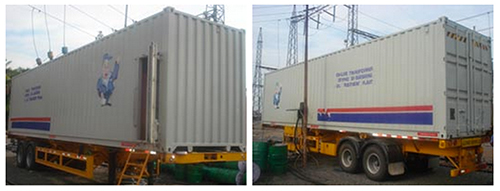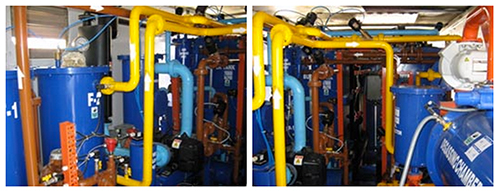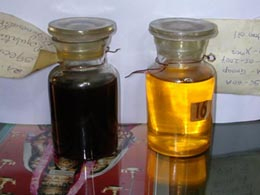SERVICES
Provide Transformer Oil Cleaning Services
Provide Transformer Oil Cleaning Services
Transformer Oil Regeneration
• Overall performance is slower and less effective
• Disposal of waste material can cause environmental problem
Model Selection for Engine:
Cee Dee Reactivation Absorbent
• Material no necessary to change, it can be reactivated in the system itself up to 300 times
• No handling problem as material self reactivated in the system
• Zero down time as system incorporated 6+6 or 12+ 12 columns. Machine is still running while the other columns is being reactivation
• Only consume as little as 0.4% each time of reactivation
• Performance is faster and more effective
• No disposal of waste material
Transformer Oil Regeneration System

During regeneration works

Inner view of regeneration machines

Through on-site, on-line regeneration and desludging of the oil, the following results are achieved:
• The moisture in the oil is reduced to below 10 ppm.
• The acidity is reduced to less than 0.01 mg KOH/g oil.
• The dielectric strength is improved to better than 60 – 70 kv
• The IFT (Interfacial tension) is improved to up to 40 Dynes.
• The Tan Delta (loss tangent) of the oil is improved to equal or less than 0.001.
• Sludges dissolved or in suspension in the oil as well as sludge deposits are removed.
• Particulate removal to 1 micron is achieved
• The oxidation stability of the oil restored to equal that of new oil.
• The color of the oil is restored.
• The dielectric strength of the solid insulation is improved.
• Degradation of the solid insulation has been halted.

Progress view of oil improvement

Picture of Visible Change in Color at transformer
 |
 |
|
| Item | OIL EXCHANGE | ON SITE REGENERATION |
| 1 | Off-line only. | On or off-line by choice. |
| 2 | Used oil must be drained and transported to regen facility. | Used oil regenerated in the transformer on-site, i.e. no removal or transportation costs. |
| 3 | Cost of new oil required for flushing. | No new oil required. |
| 4 | Flushing is not very effective in that it reaches only approximately 10% of the interior surface if done through an inspection hole. If the top lid is removed, only approximately 60% of the interior surface could be reached. Cooling fins are difficult to flush. Approximately 20% of the contaminated oil remains trapped in the cellulose insulation. | Regeneration dose more than restore the oil to its original, new condition. It also dissolves and removes the deposited sludges on the core and coils, in the cooling fins and ducts and in between windings. The adsorbed sludge (decay products) in the cellulose insulation is also removed. |
| 5 | The film of old oil remaining in the transformer and cellulose insulation contains polar compounds and can ruin large quantities of new oil. | No decay products are left. The transformer is purged of contaminants that could not be removed by any. |
| 6 | Vacuum needs to be drawn on the transformer before retro filling. | No vacuum drawing costs. |
| 7 | Danger of spillage in oil handling and transport. | No spillage danger through handling of oil. |
| 8 | Downtime estimated between 8 and 36 hours depending on the size of transformer, revenue loss. | No downtime with on-line regeneration, no revenue loss. |
